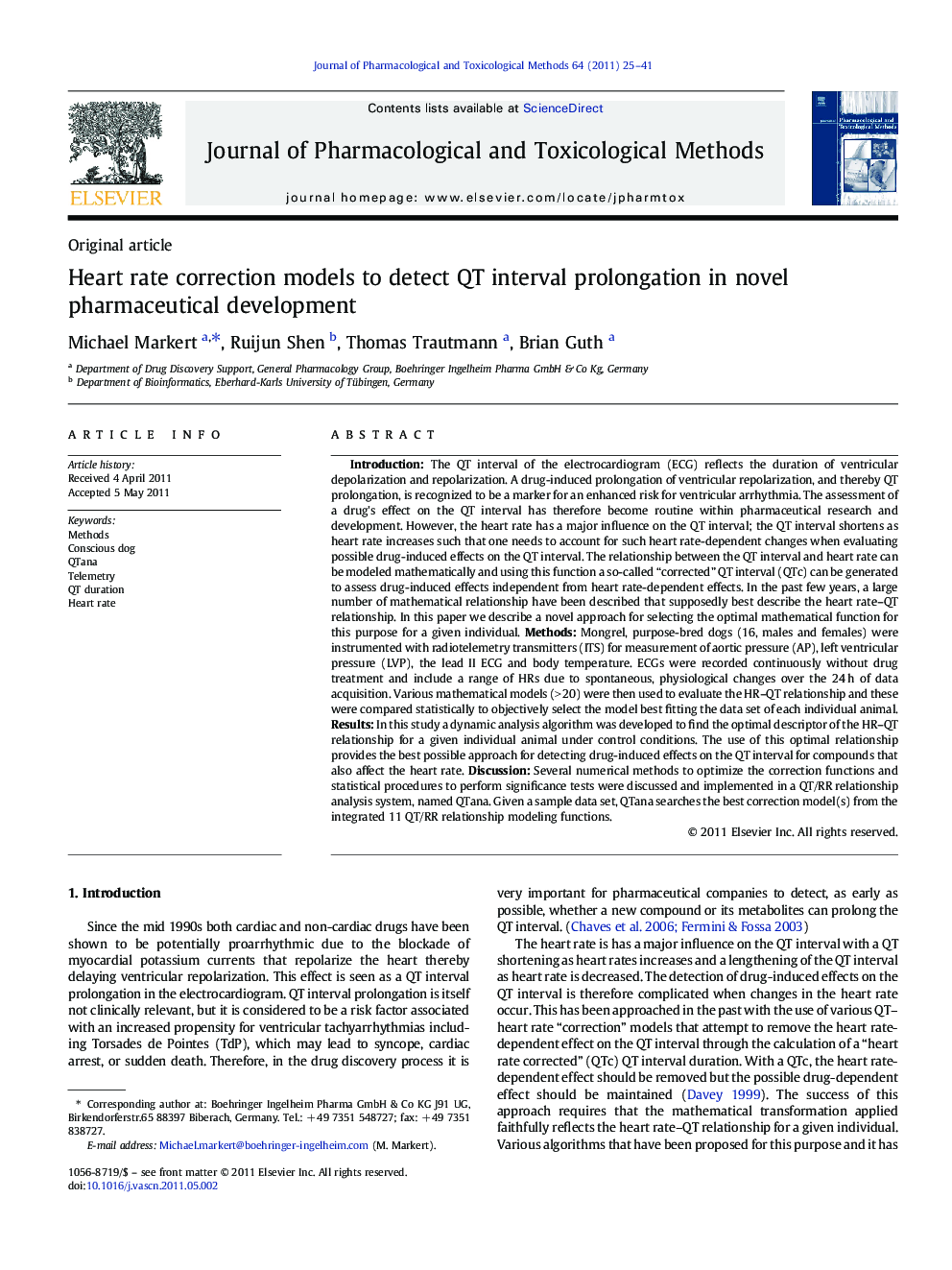| کد مقاله | کد نشریه | سال انتشار | مقاله انگلیسی | نسخه تمام متن |
|---|---|---|---|---|
| 2549554 | 1124519 | 2011 | 17 صفحه PDF | دانلود رایگان |

IntroductionThe QT interval of the electrocardiogram (ECG) reflects the duration of ventricular depolarization and repolarization. A drug-induced prolongation of ventricular repolarization, and thereby QT prolongation, is recognized to be a marker for an enhanced risk for ventricular arrhythmia. The assessment of a drug's effect on the QT interval has therefore become routine within pharmaceutical research and development. However, the heart rate has a major influence on the QT interval; the QT interval shortens as heart rate increases such that one needs to account for such heart rate-dependent changes when evaluating possible drug-induced effects on the QT interval. The relationship between the QT interval and heart rate can be modeled mathematically and using this function a so-called “corrected” QT interval (QTc) can be generated to assess drug-induced effects independent from heart rate-dependent effects. In the past few years, a large number of mathematical relationship have been described that supposedly best describe the heart rate–QT relationship. In this paper we describe a novel approach for selecting the optimal mathematical function for this purpose for a given individual.MethodsMongrel, purpose-bred dogs (16, males and females) were instrumented with radiotelemetry transmitters (ITS) for measurement of aortic pressure (AP), left ventricular pressure (LVP), the lead II ECG and body temperature. ECGs were recorded continuously without drug treatment and include a range of HRs due to spontaneous, physiological changes over the 24 h of data acquisition. Various mathematical models (> 20) were then used to evaluate the HR–QT relationship and these were compared statistically to objectively select the model best fitting the data set of each individual animal.ResultsIn this study a dynamic analysis algorithm was developed to find the optimal descriptor of the HR–QT relationship for a given individual animal under control conditions. The use of this optimal relationship provides the best possible approach for detecting drug-induced effects on the QT interval for compounds that also affect the heart rate.DiscussionSeveral numerical methods to optimize the correction functions and statistical procedures to perform significance tests were discussed and implemented in a QT/RR relationship analysis system, named QTana. Given a sample data set, QTana searches the best correction model(s) from the integrated 11 QT/RR relationship modeling functions.
Journal: Journal of Pharmacological and Toxicological Methods - Volume 64, Issue 1, July–August 2011, Pages 25–41